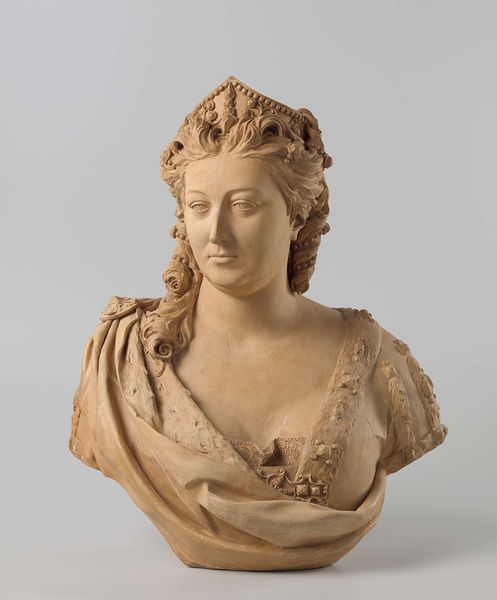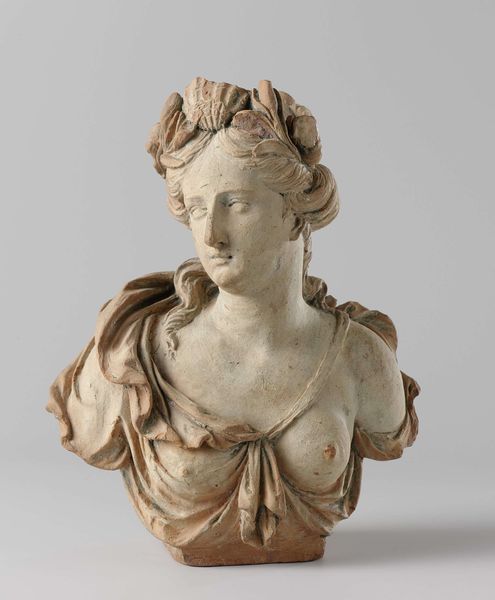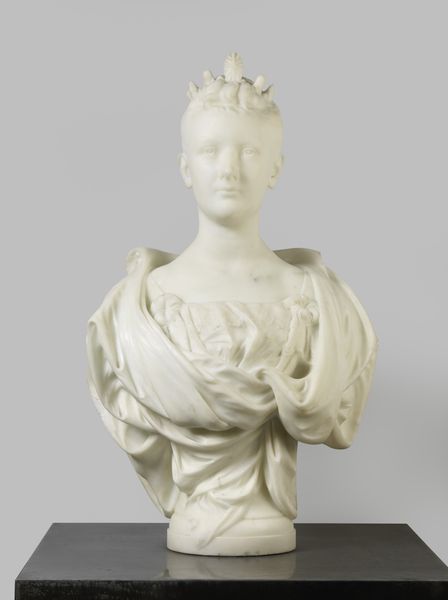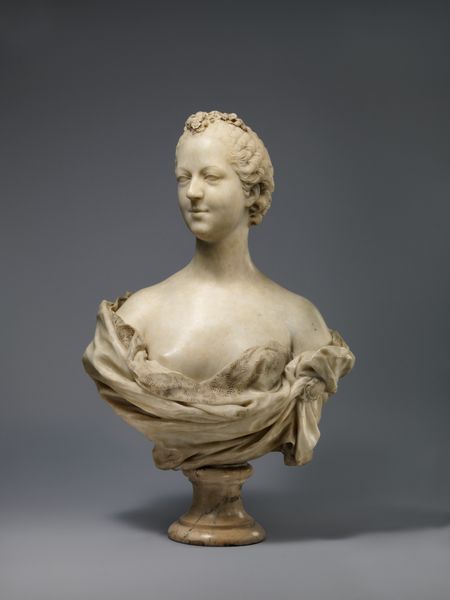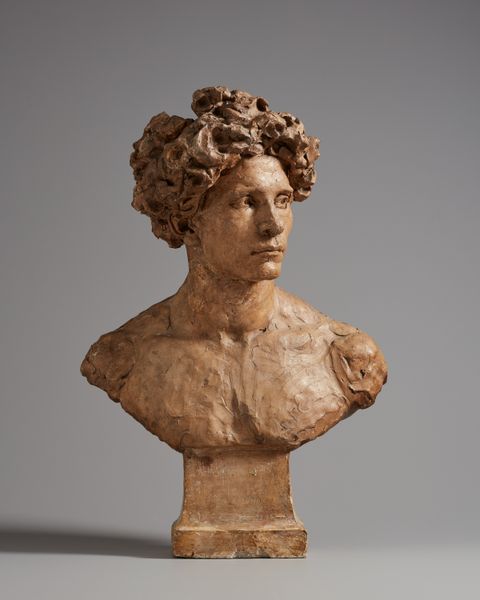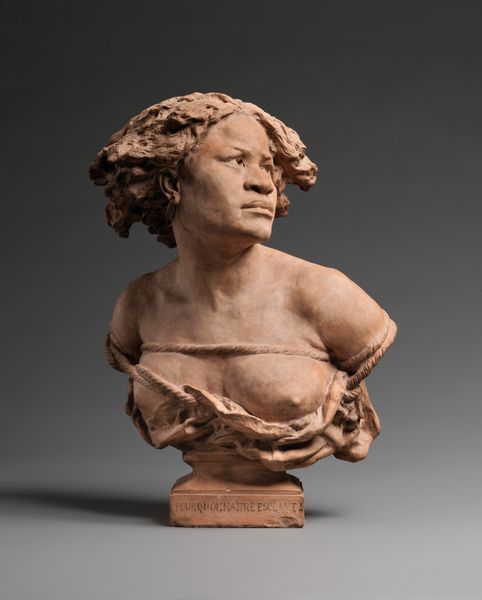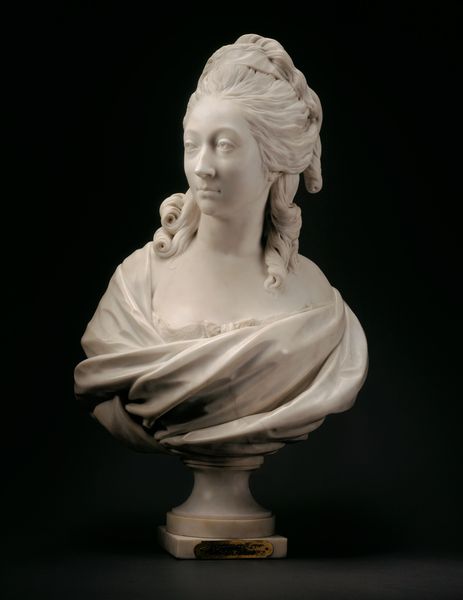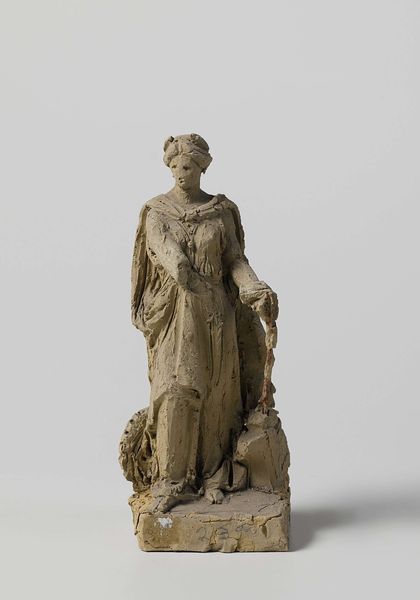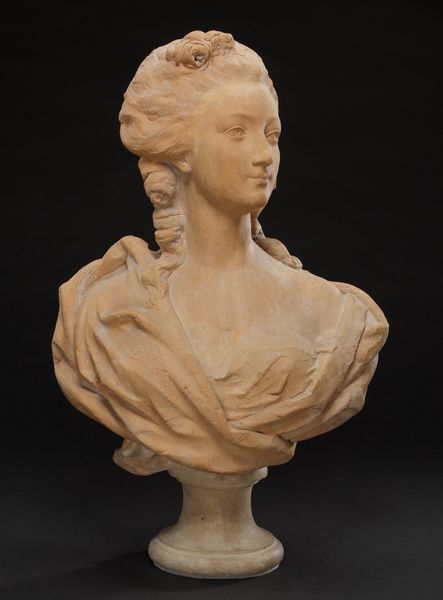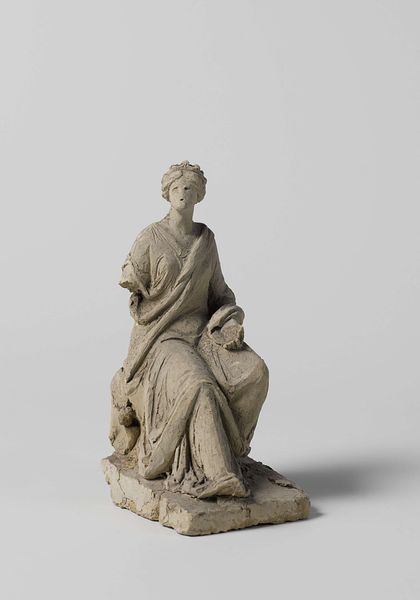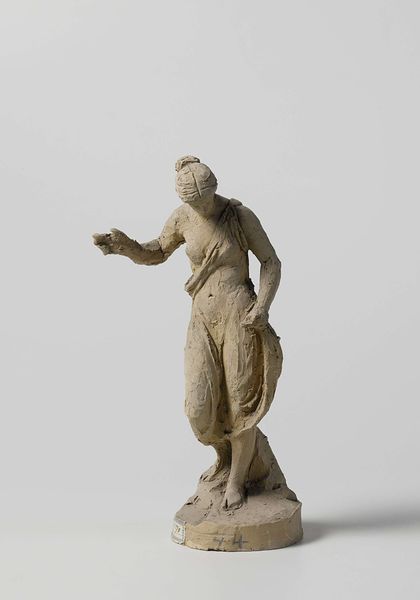
sculpture, marble
#
portrait
#
self-portrait
#
baroque
#
sculpture
#
figuration
#
11_renaissance
#
sculpting
#
classicism
#
sculpture
#
history-painting
#
marble
#
statue
Dimensions: height 72 cm, width 42 cm, depth 14 cm, weight 29.5 kg
Copyright: Rijks Museum: Open Domain
Editor: This is a marble sculpture, titled "Elizabeth-Marie-Suzanne Le Detz" from around 1720, created by Jean-Louis Lemoyne. The neutral tone of the marble gives it a somewhat reserved feel, even though the curls are so elaborate. How do you interpret this work in terms of its historical and social context? Curator: Well, the subject is a woman, presented during the Baroque era. So we need to ask, what were the conventions and expectations surrounding female representation at that time? To what extent does this sculpture perpetuate or challenge those expectations? We see her status reflected in her clothing and coiffure, but I am more curious about the gaze... is it inviting or aloof? How does that contribute to our understanding of her role in society? Editor: That’s interesting. I hadn’t considered the role of the gaze. To me, it seems rather formal, perhaps suggesting the restrictions placed on women of her status. Curator: Exactly. And beyond individual psychology, what does this represent about power dynamics? The very act of creating a marble bust solidifies her place, but also potentially fixes her into a specific, perhaps limited, historical narrative. Are there feminist perspectives we can bring to bear, interrogating who gets to be memorialized and how? Editor: I see what you mean. It prompts me to think about representation more critically – beyond just admiring the technique. Curator: Absolutely. By looking at artworks through a lens of identity and power, we reveal how these historical objects still engage with and inform our present. It really underscores how artistic expression has historically both reflected and actively participated in power structures. Editor: I’m definitely going to look at other sculptures from this era differently now, considering whose stories they tell and, more importantly, whose they omit. Curator: Precisely! Keep that critical eye trained. The most compelling analysis starts by challenging assumptions and celebrating inquiry.
Comments
No comments
Be the first to comment and join the conversation on the ultimate creative platform.
